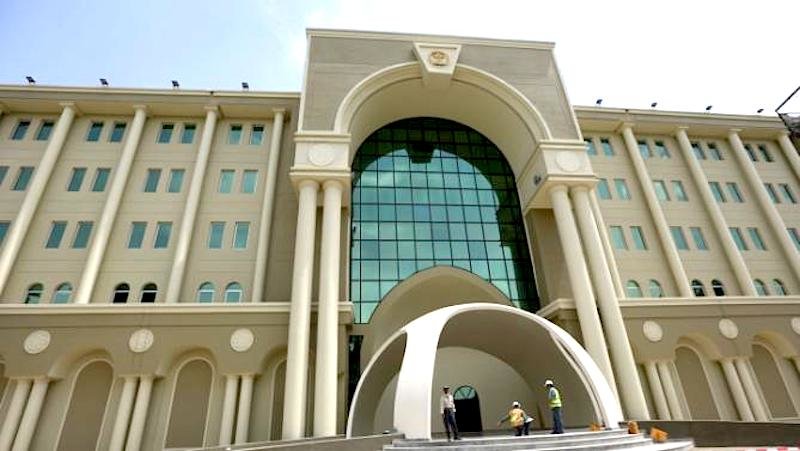
© news.yahoo.comAfghanistan Pentagon, built on shaky ground.
John F. Sopko, the special inspector general for Afghanistan reconstruction, does not rule it out. In an audit set for release Thursday, Sopko said
the new $155 million Afghan military headquarters, funded by U.S. taxpayers, may not withstand the Big One."Although the building generally met contract requirements and appears well built, we found some construction deficiencies that may have safety implications . . . in the event of an earthquake," the inspector general wrote to U.S. military leaders. Sopko was referring to engineering standards that call for the
foundations of large buildings to be segmented, allowing movement to be diverted in multiple directions. That would lessen the chance of large structures shaking to the point of collapse. In this case, the new jewel of the Afghan military — a structure often referred to as the Afghan Pentagon —
does not even meet the standards of the American Society of Civil Engineers, the report says.
The document is the latest question to be raised about how the
United States spent more than $68 billion in funding for Afghan security forces since 2001, including $6 billion for bases and buildings. When the new Defense Ministry headquarters was proposed in 2009, it was slated to cost about $49 million. But the project encountered numerous delays and cost overruns, in part because the Afghan military kept adding new features to the project. By 2014, the project had become so expensive that the U.S. military had effectively run out of money to complete it, prompting a stop-work order.
But Congress replenished the funds, and the building was completed this past summer. The 516,000-square-foot structure features a 1,000-seat auditorium, state-of-the-art command-and-control centers, a dining hall, a library and conference rooms. Sopko said the lack of adequate structural support represents a glaring oversight, considering Afghanistan's history of significant earthquakes.
As any resident of Kabul can attest, there can be multiple jolts in a single week. In the past four months, the maze of fault lines in northeastern Afghanistan produced two earthquakes with a magnitude of 6 or greater, including a 7.5-magnitude temblor in October. In 2002, a 7.2-magnitude earthquake flattened dozens of buildings in Kabul.
"We found
separation joints that were (1) not continuous or aligned vertically; and (2) were spanned with nonstructural systems, such as drain pipes, on the inside of the building without flexible connections," the report says in part. "These deficiencies could compromise the building's ability to withstand ground motion caused by seismic activity."
Brig. Gen. Dawlat Waziri, chief spokesman for the Afghan Defense Ministry, declined to comment on the report, except to say that Afghans are not blame for any structural deficiencies. "It was built by their own people," Waziri said, referring to the United States. "We had nothing to do with it."
In a written response, the U.S. military agreed with another key finding in the report — handrails in stairwells were not built high enough — but did not comment on the building's likely structural stability during a major earthquake.
After the earthquake in October, which spared Kabul from major damage because it occurred at a depth of more than 125 miles,
a large crack appeared on one of the building's exterior walls. The inspector general said that, overall, the building did not sustain "significant damage."
"However, given Kabul's location in an active seismic zone, we remain concerned about the extent to which the MOD headquarters building would withstand an earthquake with an epicenter closer to Kabul or of greater magnitude," according to the report.
Comment: Afghani 'Pentagon' made by the USA is wrought with 'faulty' integrity, structural instability, cracks in the facade, code violations, is disjointed, unaligned, with glaring oversights and, all-in-all, not much left to hang onto when things finally shake out. A metaphor for its builder?